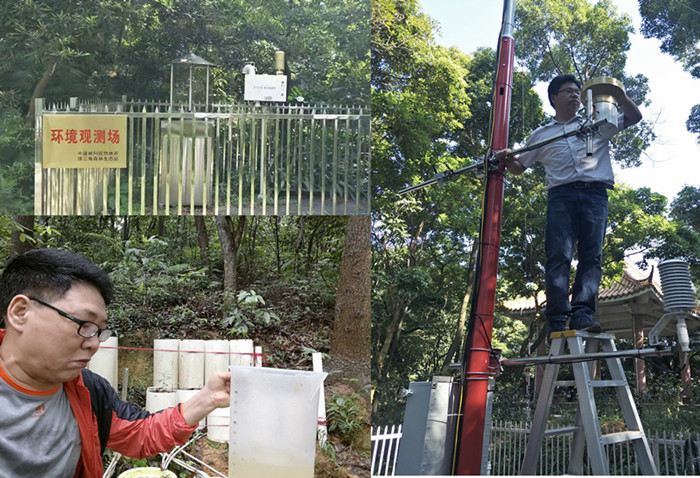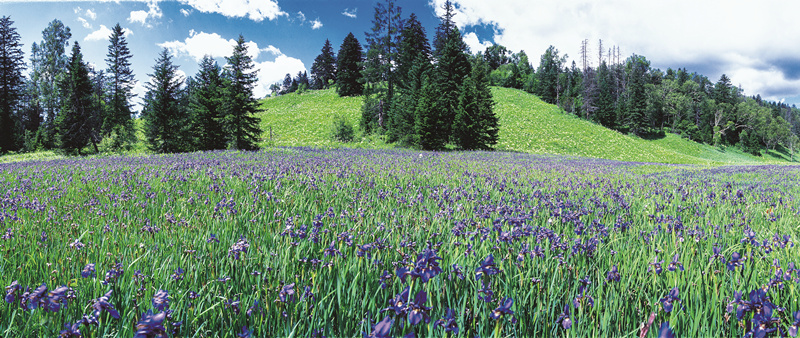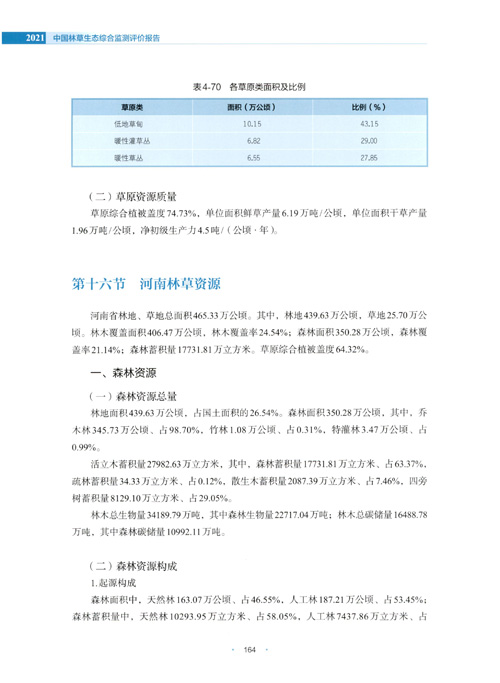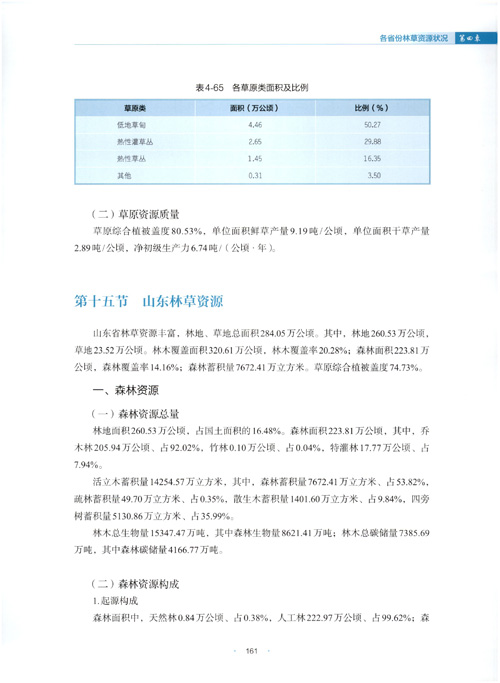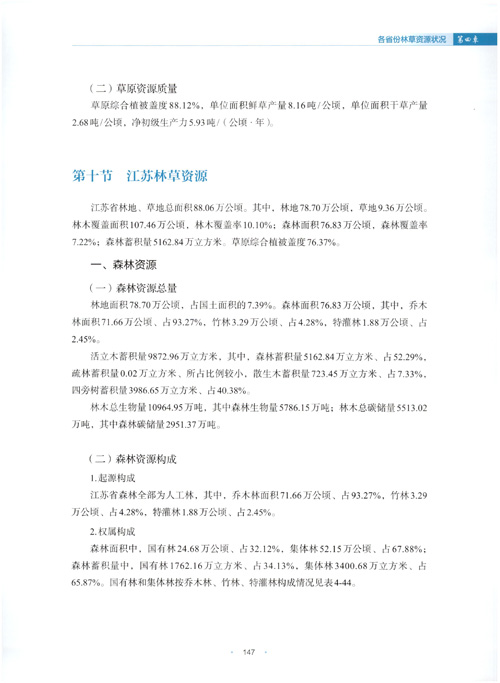
森林生态系统混合斑块模型模拟机理、应用及启示
编号
lyqk008145


中文标题
森林生态系统混合斑块模型模拟机理、应用及启示


作者
张旭峰
吴水荣
Manfred Lexer
陈绍志
余洋婷


作者单位
1. 中国林业科学研究院林业科技信息研究所, 北京 100091;
2. 奥地利维也纳自然资源与应用生命科学大学, 维也纳 1190;
3. 中国绿色时报社, 北京 100714


期刊名称
世界林业研究


年份
2020


卷号
33


期号
1


栏目编号
1


栏目名称
专题论述


中文摘要
随着人们对森林多功能性认识加深及对森林多种产品与服务的需求增加,森林经营受到更广泛的关注。传统设置样地比较经营活动效果的方式在时间上具有迟滞性,学者认为应采用数学模型对森林经营进行计算机仿真,森林生长与动力学模型在森林可持续经营中应用的作用愈加突出。文中对基于林分经营尺度的森林生态系统混合斑块模型(PICUS)进行引介,详细介绍了其2个基础组成模型——林窗模型与基于生理过程的3-PG模型,对PICUS模型的林木死亡率、更新、森林经营以及森林生态系统地下过程等子模块进行了简要概述,并阐述了该模型在欧洲及中国的应用与启示,对于促进PICUS模型在实践中的推广应用以及提高人们对森林生长过程与动态的认识和理解具有重要意义。


关键词
森林生态系统
计算机仿真
PICUS模型
林窗模型
3-PG模型


基金项目
国家自然科学基金“树种选择与配置对森林多重服务功能的影响机制及模拟优化研究”(31270681);国家林业局林业软科学研究项目“我国森林经营经济理论创新与决策优化研究”(2016-R18);国家林业局948项目“人工林多功能经营及模拟预测技术引进”(2012-4-69)。


英文标题
Forest Ecosystem Hybrid Patch Model: Modelling Mechanism, Application and Inspiration


作者英文名
Zhang Xufeng, Wu Shuirong, Manfred Lexer, Chen Shaozhi, Yu Yangting


单位英文名
1. Research Institute of Forestry Policy and Information, Chinese Academy of Forestry, Beijing 100091, China;
2. University of Natural Resources and Life Sciences Vienna, Vienna 1190, Austria;
3. China Green Times, Beijing 100714, China


英文摘要
As people have gained the awareness of forest multi-functionality and set more demand for forest ecosystem goods and services, forest management has drawn a wide attention. However, the conventional way of setting sample plots takes time to reflect the effects of forest management. People begin to apply mathematic models to simulate the forest management. Models of forest growth and dynamics play an increasingly prominent role in the development of sustainable forest management. This paper introduces the PICUS model (Forest Ecosystem Hybrid Patch Model), especially the two fundamental models, i.e., forest gap model and 3-PG model, elaborates the sub-/modules of mortality, regeneration, management and underground process of forest ecosystem, and discusses the PICUS model application in the Europe and China and its inspiration. This study is of great significance to promote the application of PICUS model in practices and increase the understanding of forest growth and dynamics.


英文关键词
forest ecosystem;simulation;PICUS model;forest gap model;3-PG model


起始页码
1


截止页码
7


投稿时间
2019/4/24


最后修改时间
2019/10/14


作者简介
张旭峰,博士研究生,研究方向为森林资源管理与环境经济,E-mail:xufengzhang010@163.com。


通讯作者介绍
吴水荣,博士,研究员,研究方向为森林资源与环境经济、森林多目标经营管理、气候变化林业政策,E-mail:shuirongwu@126.com。


E-mail
吴水荣,shuirongwu@126.com


分类号
S718.5


DOI
10.13348/j.cnki.sjlyyj.2019.0088.y


参考文献
[1] 习近平:良好生态环境是最公平的公共产品[EB/OL].(2015)[2018-12-01]. http://www.xinhuanet.com/politics/2015-05/06/c_1115193871.htm.
[2] 唐守正,雷相东.加强森林经营,实现森林保护与木材供应双赢[J].中国科学(生命科学), 2014,44(3):223-229.
[3] 联合国.巴黎协定[EB/OL].(2015)[2018-12-01]. https://unfccc.int/process-and-meetings/the-paris-agreement/the-paris-agreement.
[4] 国家林业局. 2016年中国林业发展报告[M].北京:中国林业出版社, 2017.
[5] 祝列克.森林可持续经营[M].北京:中国林业出版社, 2001.
[6] 国家林业局.全国森林经营规划(2016-2050年)[R].北京:中国林业出版社, 2016.
[7] 刘世荣,代力民,温远光,等.面向生态系统服务的森林生态系统经营:现状、挑战与展望[J].生态学报, 2015, 35(1):1-9.
[8] 吴水荣,海因里希·施皮克尔,陈绍志,等.德国森林经营及其启示[J].林业经济, 2015(1):50-55.
[9] 兰倩,吴水荣,邬可义,等.近自然小流域森林经营理论与实践[J].世界林业研究, 2016,29(2):7-11.
[10] 陆元昌,张守攻,雷相东,等.人工林近自然化改造的理论基础和实施技术[J].世界林业研究, 2009,22(1):20-27.
[11] 惠刚盈,VON KLAUS G,胡艳波,等.结构化森林经营[M].北京:中国林业出版社, 2007.
[12] 刘世荣,马姜明,缪宁.中国天然林保护、生态恢复与可持续经营的理论与技术[J].生态学报, 2015,35(1):212-218.
[13] 雷相东,陆元昌,张会儒,等.抚育间伐对落叶松云冷杉混交林的影响[J].林业科学, 2005,41(4):78-85.
[14] 李婷婷,陈绍志,吴水荣,等.采伐强度对水源涵养林林分结构特征的影响[J].西北林学院学报, 2016,31(5):102-108.
[15] 梁星云,何友均,张谱,等.不同经营模式对丹清河林场天然次生林植物群落结构及其多样性的影响[J].林业科学, 2013,49(3):93-102.
[16] 何友均,梁星云,覃林,等.南亚热带人工针叶纯林近自然改造早期对群落特征和土壤性质的影响[J].生态学报, 2013,33(8):2484-2495.
[17] 姜俊,谢阳生,陆元昌,等.不同林龄阶段马尾松人工林群落结构特征及经营策略[J].西北林学院学报, 2015,30(6):1-7.
[18] 李婷婷,陆元昌,庞丽峰,等.杉木人工林近自然经营的初步效果[J].林业科学, 2014,50(5):90-100.
[19] 李春义,马履一,王希群,等.抚育间伐对北京山区侧柏人工林林下植物多样性的短期影响[J].北京林业大学学报, 2007,29(3):60-66.
[20] 李春义.抚育间伐对北京山区侧柏、油松人工林林下植物的影响[D].北京:北京林业大学, 2007.
[21] 安长生.抚育间伐对小陇山林区日本落叶松人工林生长的影响[J].甘肃科技, 2009,25(8):155-156.
[22] 郭万军,王广海,张利民,等.抚育间伐对林木生长及其稳定性的影响[J].河北林果研究, 2011,26(3):243-246.
[23] 徐国巧.华北落叶松人工林抚育间伐效果研究[D].河北保定:河北农业大学, 2008.
[24] 辛力.森林抚育对不同林分类型结构及健康的影响研究[D].陕西杨凌:西北农林科技大学, 2011.
[25] 高西宁,赵亮,尹云鹤.气候变化背景下森林动态模拟研究综述[J].地理科学进展, 2014,33(10):1364-1374.
[26] 李双成.植物响应气候变化模型模拟研究进展[J].地理科学进展, 2001,20(3):216-225.
[27] MÄKELÄ A, LANDSBERG J, EK A R, et al. Process-based models for forest ecosystem management:current state of the art and challenges for practical implementation[J]. Tree Physiology, 2000, 20(5/6):289-298.
[28] PENG C. Understanding the role of forest simulation models in sustainable forest management[J]. Environmental Impact Assessment Review, 2000, 20(4):481-501.
[29] University of Natural Resources and Life Sciences. The ecosystem model PICUS[R]. Austria:University of Natural Resources and Life Sciences, 2013.
[30] RAMMER W. PICUS user guide[R]. Vienna, Austria:Institute of Silviculture, Department of Forest and Soil Science, University of Natural Resource Management and Applied Life Science, 2006.
[31] BOTKIN D B, JANAK J F, WALLIS J R. Some ecological consequences of a computer model of forest growth[J]. Journal of Ecology,1972, 60(3):849-872.
[32] 霍常富,赵晓敏,鲁旭阳,等.林窗模型研究进展[J].世界林业研究, 2009,22(6):43-48.
[33] 于振良,赵士洞.林隙(Gap)模型研究进展[J].生态学杂志, 1997,16(2):43-47.
[34] LEXER M J, HÖNNINGER K. A modified 3D-patch model for spatially explicit simulation of vegetation composition in heterogeneous landscapes[J]. Forest Ecology and Management, 2001, 144(1/2/3):43-65.
[35] POLLANSCHUTZ J. Formzahlfunktionen der hauptbaumartenösterreichs[J]. Allgemeine Forstzeitung, 1974(1):341-343.
[36] LANDSBERG J J, WARING R H. A generalised model of forest productivity using simplified concepts of radiation-use efficiency, carbon balance and partitioning[J]. Forest Ecology and Management, 1997, 95(3):209-228.
[37] SEIDL R, LEXER M J, JÄGER D, et al. Evaluating the accuracy and generality of a hybrid patch model[J]. Tree Physiology, 2005, 25(7):939-951.
[38] SEIDL R, LEXER M J, RAMMER W, et al. Impact of bark beetle infestations on timber production and carbon sequestration unber scenarios of climate change[C]. Ediburgh, UK:IUFRO, 2006.
[39] CURRIE W S, ABER J D. Modeling leaching as a decomposition process in humid montane forests[J]. Ecology, 1997, 78(6):1844-1860.
[40] CURRIE W S, NADELHOFFER K J, ABER J D. Soil detrital processes controlling the movement of 15N tracers to forest vegetation[J]. Ecological Applications, 2006, 9(1):81-102.
[41] CURRIE W S, HELMERS D. A user guide for the TRACE model[EB/OL].(2005)[2018-12-31]. https://www.nrc.gov/docs/ML1200/ML120060239.pdf.
[42] CURRIE W S, NADELHOFFER K J. Original articles:dynamic redistribution of isotopically labeled cohorts of nitrogen inputs in two temperate forests[J]. Ecosystems, 1999, 2(1):4-18.
[43] ABER J D, OLLINGER S V, DRISCOLL C T. Modeling nitrogen saturation in forest ecosystems in response to land use and atmospheric deposition[J]. Ecological Modelling, 1997, 101(1):61-78.
[44] BADECK F, LISCHKE H, BUGMANN H, et al. Tree species composition in european pristine forests:comparison of stand data to model predictions[J]. Climatic Change, 2001, 51(3/4):307-347.
[45] LEXER M J, HÖNNINGER K, SCHEIFINGER H, et al. The sensitivity of Central European mountain forests to scenarios of climatic change:methodological frame for a large-scale risk assessment[J]. Silva Fennica, 2000, 2(34):113-129.
[46] SEIDL R, BAIER P, RAMMER W, et al. Modelling tree mortality by bark beetle infestation in Norway spruce forests[J]. Ecological Modelling, 2007, 206(3/4):383-399.
[47] SEIDL R, RAMMER W, JÄGER D, et al. Impact of bark beetle (Ips typographus L.) disturbance on timber production and carbon sequestration in different management strategies under climate change[J]. Forest Ecology and Management, 2008, 256(3):209-220.
[48] SEIDL R, SCHELHAAS M, LINDNER M, et al. Modelling bark beetle disturbances in a large scale forest scenario model to assess climate change impacts and evaluate adaptive management strategies[J]. Regional Environmental Change, 2009, 9(2):101-119.
[49] RAMMER W, BRAUNER M, RUPRECHT H, et al. Evaluating the effects of forest management on rockfall protection and timber production at slope scale[J]. Scandinavian Journal of Forest Research, 2015, 30(8):719-731.
[50] SEIDL R, RAMMER W, JÄGER D, et al. Assessing trade-offs between carbon sequestration and timber production within a framework of multi-purpose forestry in Austria[J]. Forest Ecology and Management, 2007, 248(1/2):64-79.
[51] LEXER M J, SEIDL R. Addressing biodiversity in a stakeholder-driven climate change vulnerability assessment of forest management[J]. Forest Ecology and Management, 2009, 258:S158-S167.
[52] SEIDL R, RAMMER W, LEXER M J. Climate change vulnerability of sustainable forest management in the Eastern Alps[J]. Climatic Change, 2011, 106(2):225-254.
[53] MAROSCHEK M, RAMMER W, LEXER M J. Using a novel assessment framework to evaluate protective functions and timber production in Austrian mountain forests under climate change[J]. Regional Environmental Change, 2015, 15(8):1543-1555.
[54] SEIDL R, LEXER M J. Forest management under climatic and social uncertainty:trade-offs between reducing climate change impacts and fostering adaptive capacity[J]. Journal of Environmental Management, 2013, 114:461-469.
[55] SEIDL R, RAMMER W, LEXER M J. Adaptation options to reduce climate change vulnerability of sustainable forest management in the Austrian Alps[J]. Canadian Journal of Forest Research, 2011, 41(4):694-706.
[56] 中国林业科学研究院林业科技信息研究所.人工林多功能经营及模拟预测技术引进研究报告[R].北京:中国林业科学研究院林业科技信息研究所, 2013.
[57] 张旭峰.树种配置对森林多功能影响的模拟与综合效益评价[D].北京:中国林业科学研究院, 2016.
[58] 中国林业科学研究院林业科技信息研究所.油松与栎类人工林多功能经营及模拟预测[R].山西:中条山国有林管理局, 2018.


PDF全文
浏览全文


-
相关记录
更多
- 火干扰对森林凋落物分解的影响研究进展 2023
- 基于CNKI的森林生态系统稳定性研究现状与热点分析 2022
- 森林生态系统对降水过程中的重金属影响研究综述 2022
- 森林影响降水水质研究概述 2021
- 关于我国森林生态系统保护和修复的思考 2021
- 北京市浅山区森林生态系统服务功能评估 2020
 打印
打印
